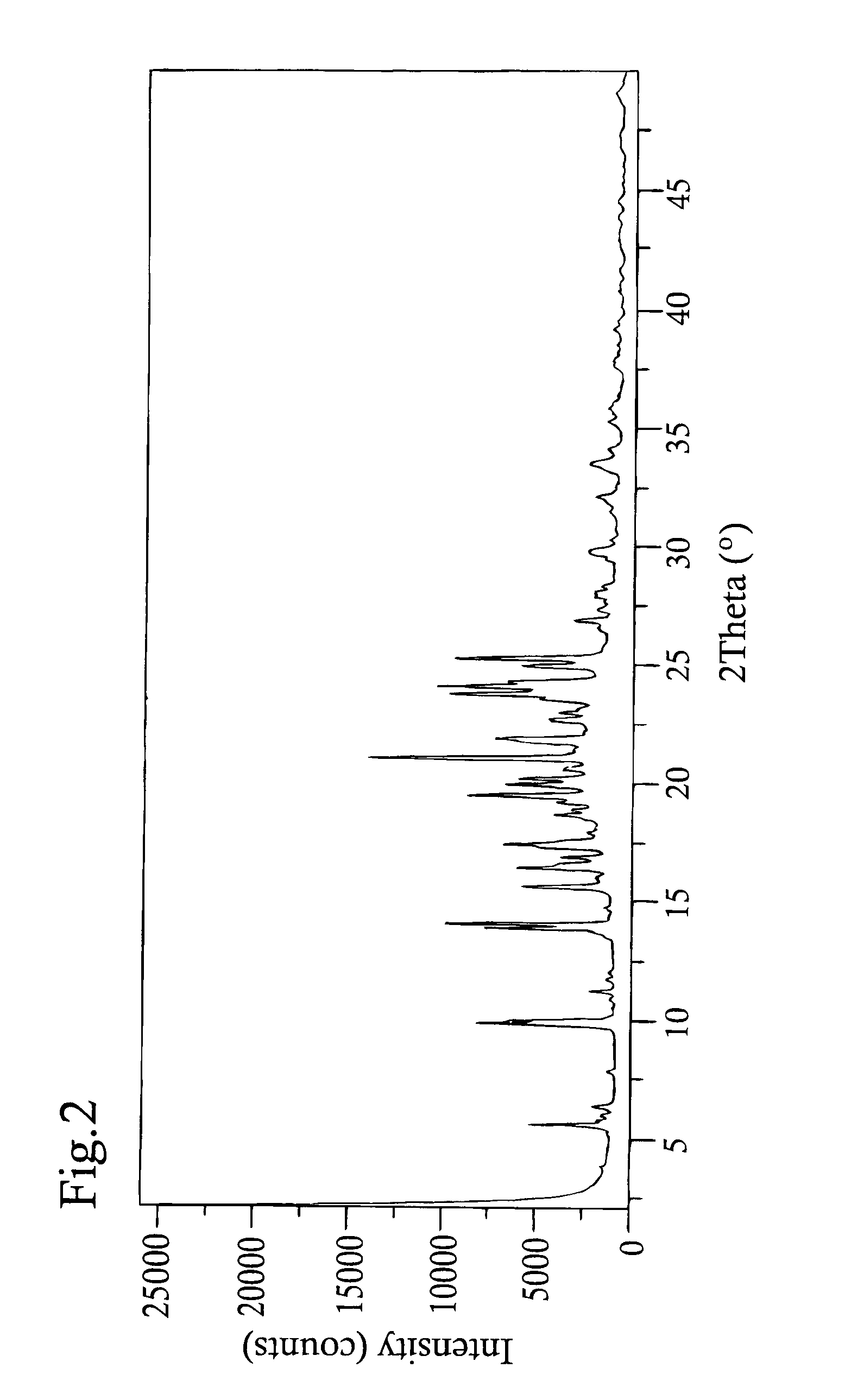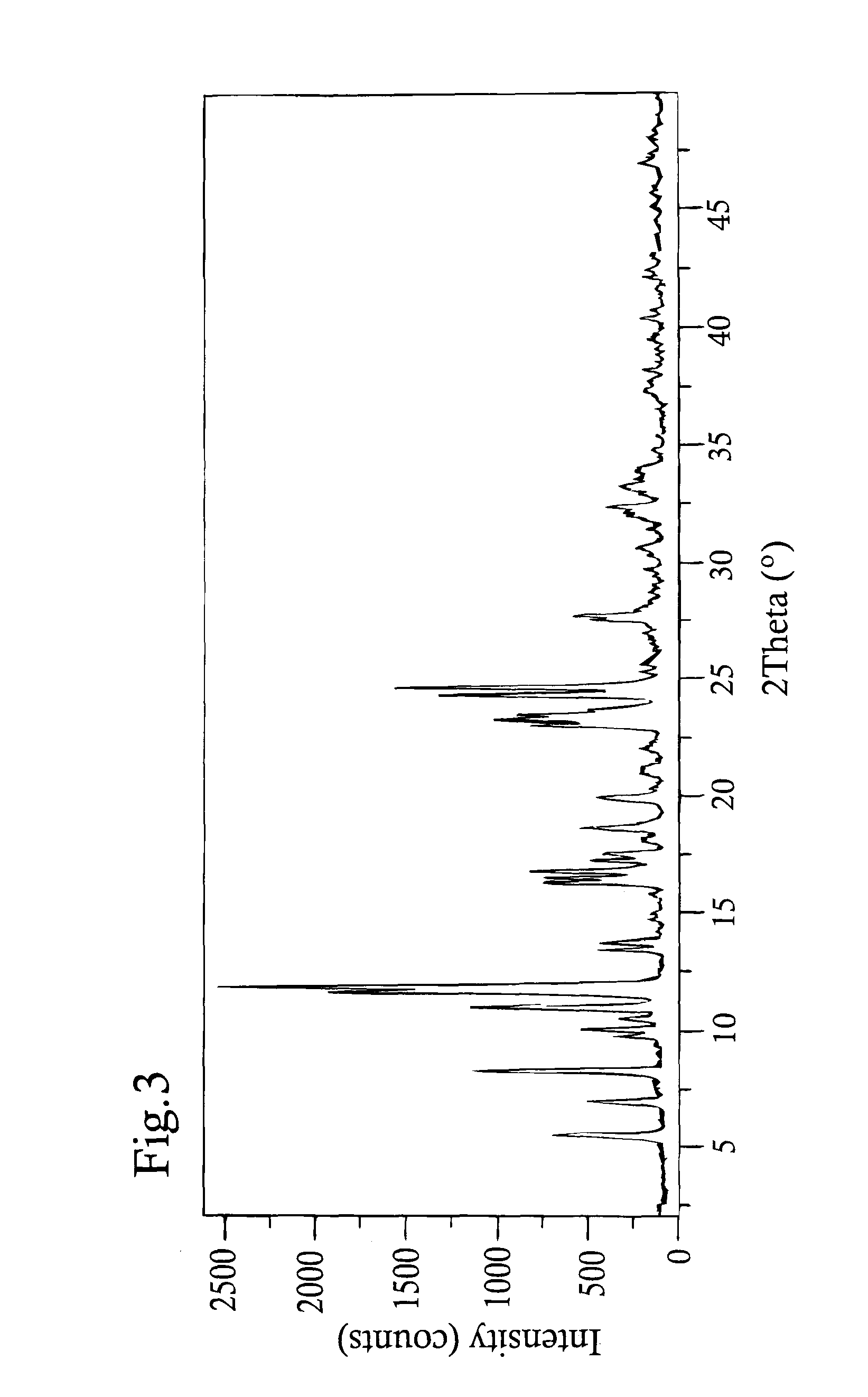Picropodophyllin polymorph C and its use in cancer therapy
a technology of picropodophyllin and polymorph c, which is applied in the field of new picropodophyllin polymorphs, can solve the problems of affecting the bioavailability of drugs
- Summary
- Abstract
- Description
- Claims
- Application Information
AI Technical Summary
Benefits of technology
Problems solved by technology
Method used
Image
Examples
example 1
Preparation of Picropodophyllin Monohydrate
[0169]17.3 kg (127 moles) of NaOAc×3H2O was dissolved in water, filtered and added to a filtered solution of 10.5 kg (25 moles) of picropodophyllin in ethanol (95% in water, 198 L). The reaction mixture was kept at 70-75° C. during at least 2 hours, after which it was cooled. The product picropodophyllin was isolated through a Nutch filter, washed with ethanol (approximately 50% in water) and dried under vacuum. The thus obtained product was subjected to conditioning with water, i.e. the product was stored next to a beaker filled with water, during at least 96 hours to yield picropodophyllin monohydrate (8 kg).
example 2
Crystallization of Picropodophyllin Polymorph B
[0170]0.503 g of picropodophyllin monohydrate obtained in Example 1 was dissolved in 45.0 ml p-xylene at reflux. The solution was removed from the heating plate, placed at 80° C. for one hour and thereafter at room temperature for additionally five hours. The crystals were filtered off and dried under vacuum overnight to give 0.310 g (yield 64.3%) of picropodophyllin polymorph B.
[0171]Picropodophyllin polymorph B was subsequently synthesized on a larger scale as follows: Picropodophyllin (20 g, monohydrate) was dissolved in p-xylene (1.9 L) at reflux. The solution was concentrated by evaporation of the solvent (about 1.1 L) at the boiling temperature. The product started to crystallize during evaporation and thin slurry was obtained. The slurry was removed from the heating bath and let cool down slowly to room temperature. More crystalline precipitate was obtained and the slurry became thicker. The slurry was equilibrated over night at ...
example 3
Crystallization of Picropodophyllin Polymorph C
[0179]0.502 g of picropodophyllin monohydrate obtained in Example 1, was dissolved in 13.0 ml methyl ethyl ketone (MEK) at reflux, thereafter the temperate of the solution was decreased to 70° C. and kept at this temperature for 30 minutes. The temperature was thereafter gradually decreased in 10° C. steps to 30° C. during two hours and thereafter kept at ambient temperature for additionally two hours. The crystals were filtered off and dried in open air overnight to give 0.230 g (yield 47.8%) of picropodophyllin polymorph C.
[0180]Picropodophyllin polymorph C was subsequently synthesized on a larger scale as follows: Picropodophyllin (22 g, monohydrate) was dissolved in methyl ethyl ketone (760 mL) at reflux. The solution was concentrated by evaporation of the solvent (about 200 mL) at the boiling temperature. The temperature of the solution was decreased to 55° C. and kept at this temperature in 30 minutes. The product started to cryst...
PUM
| Property | Measurement | Unit |
|---|---|---|
| solubility | aaaaa | aaaaa |
| temperature | aaaaa | aaaaa |
| temperature | aaaaa | aaaaa |
Abstract
Description
Claims
Application Information
 Login to View More
Login to View More - R&D
- Intellectual Property
- Life Sciences
- Materials
- Tech Scout
- Unparalleled Data Quality
- Higher Quality Content
- 60% Fewer Hallucinations
Browse by: Latest US Patents, China's latest patents, Technical Efficacy Thesaurus, Application Domain, Technology Topic, Popular Technical Reports.
© 2025 PatSnap. All rights reserved.Legal|Privacy policy|Modern Slavery Act Transparency Statement|Sitemap|About US| Contact US: help@patsnap.com



